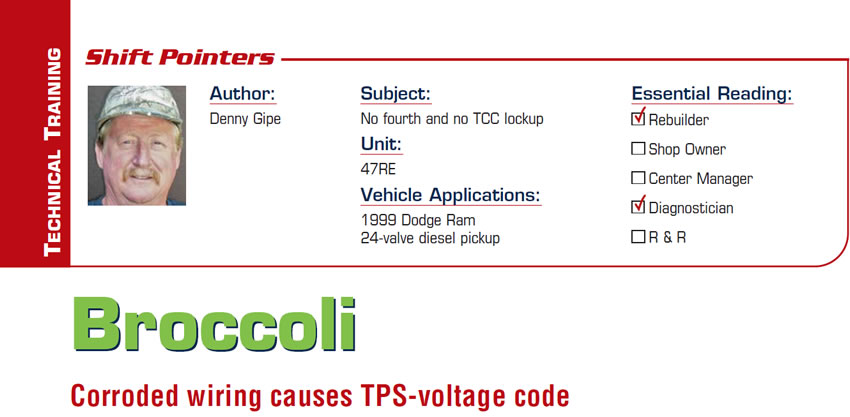Allison 1000 Converters – the Next Generation
The Allison 1000 converter has evolved considerably throughout its existence. By the end of the 2007 model year there had been five different generations of this converter. The chart in Figure 1 lists the part name, stall torque ratio, part number and color ID code for the first five generations of this converter (Transmission Digest, November 2007, page 47).
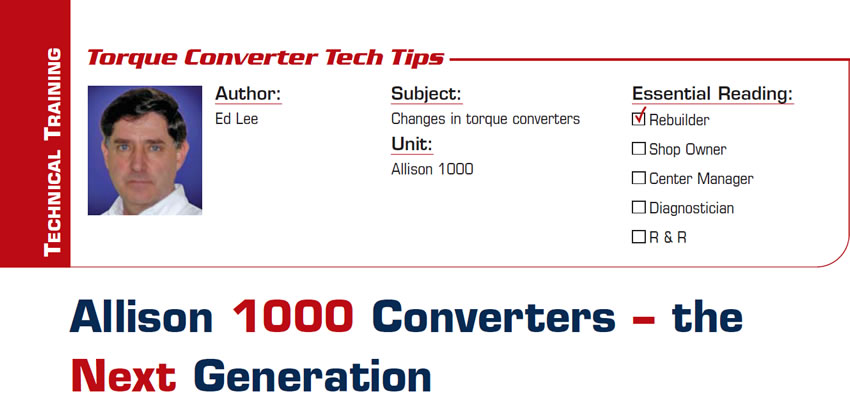
Analyzing Data Helps Solve Complicated Problems
With the addition of parameter identification data (PID), we can combine data with our knowledge of the way a transmission is designed to work and use it as a form of X-ray that permits us to see inside the transmission, so to speak. Let us use the following example to illustrate this.
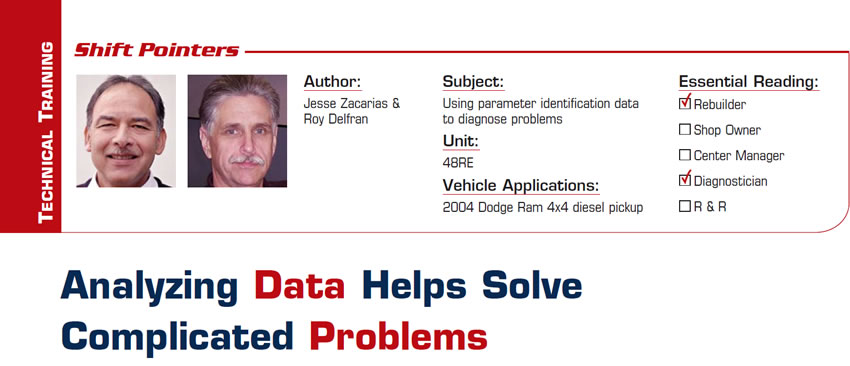
Triple Play
The AS68RC is a rear-wheel-drive Aisin Seiki six-speed transmission that began its life in the U.S. with Isuzu, UD and Mitsubishi midsize trucks (Figure 1). Since the 2007 model year, it has been used in Dodge incomplete-chassis and commercial vehicles with a GCVW rating of 26,000 pounds and the 6.7-liter Cummins diesel engine.
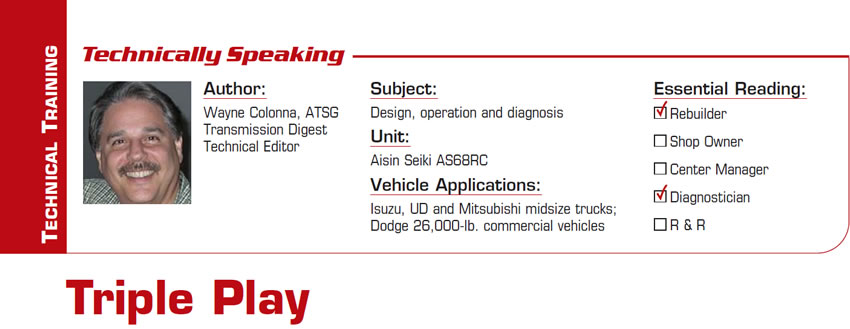
RE5R05A Facts and Observations
This transmission has been on the street since 2002, when it was first used in the Infiniti Q45 with the 4.5-liter engine. Since then, Infiniti and Nissan have used this transmission in many models. There are three versions of the RE5R05A valve body…
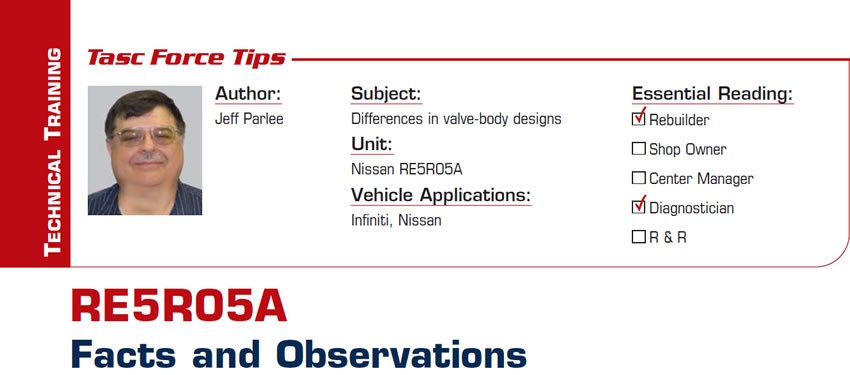
Short-Circuited
In March 2006 Dodge issued safety recall E17 for 2003-05 Dodge Ram pickups equipped with the 5.9-liter diesel and 48RE transmission. This recall addressed a safety issue that could occur if the driver parked the vehicle without placing the gear selector fully in park and left the engine running. The repair consists of a re-flash that when initiated will sound the horn, flash the headlights and cause the PRNDL display to flash if the door is opened and the driver tries to exit a running vehicle without the selector fully in Park. This re-flash can be done only with the DRB-3 scan tool and dealer software.
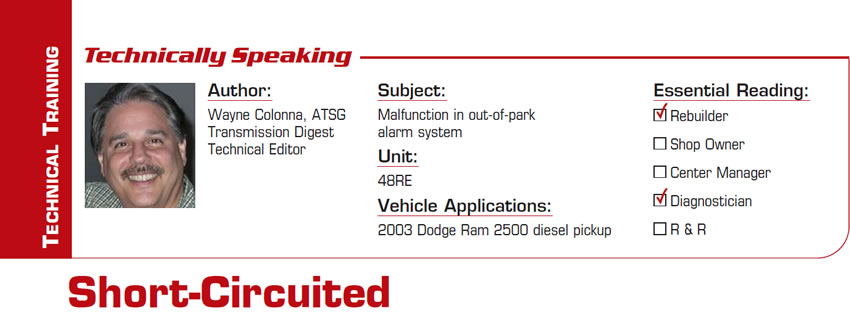
Thinking Outside the Box
After the customer left, I hopped into the vehicle and pulled it up in a bay, noticing that the speedo cluster’s odometer was not lit up, nor was the speedo working. I grabbed a scan tool, and, sure enough, it had a 452 code for loss of speedo signal. I thought blown fuse, because the odometer was not working. I checked the fuse and it was blown.
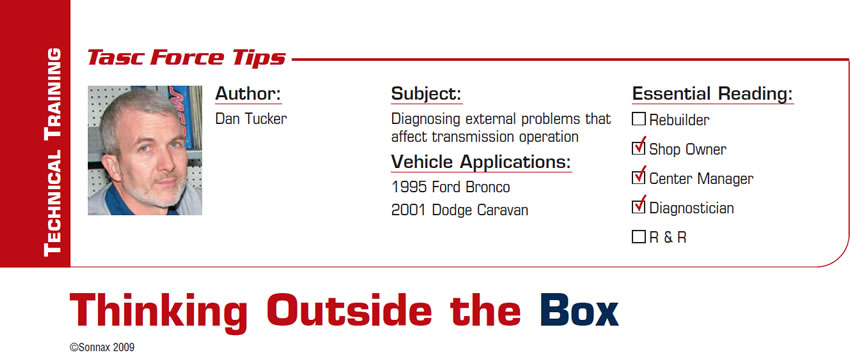
When the Obvious Is not so Obvious
We had a 1995 Ford Super Duty with a 7.3-liter diesel engine and E4OD transmission that had no trouble codes but appeared to be going in and out of TCC lockup at steady cruise speed. If you accelerated hard when this was going on the TCC would engage properly until you came back to cruising speed and there was no more load on the engine. This was a commercial truck that had a heavy air compressor in the back and was always towing a big trailer, so the problem was very noticeable as the truck was being driven.
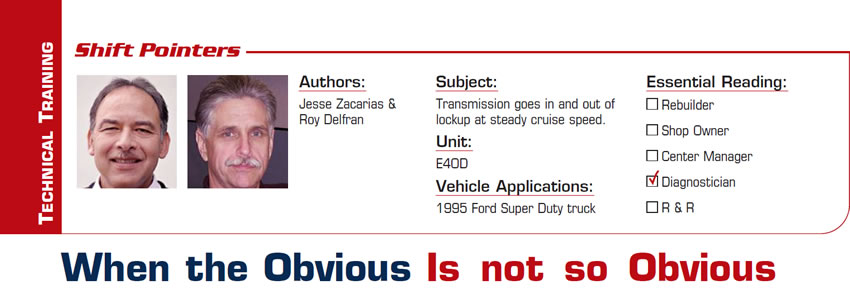
Orifice Control Within the Converter, Part 3
The secondary path of the charge/TCC-release oil is regulated to some degree by transmission parts within the confines of the converter. In some units, the charge oil is regulated by the orifice created between the raised area on the stator shaft (or support) and the impeller hub. In other units, it is regulated by restricting the flow of oil through or around the input-shaft bushing mounted inside the stator support. The Allison 500 series is a unique example because it uses both methods to regulate oil flow, as it both enters and exits the converter.
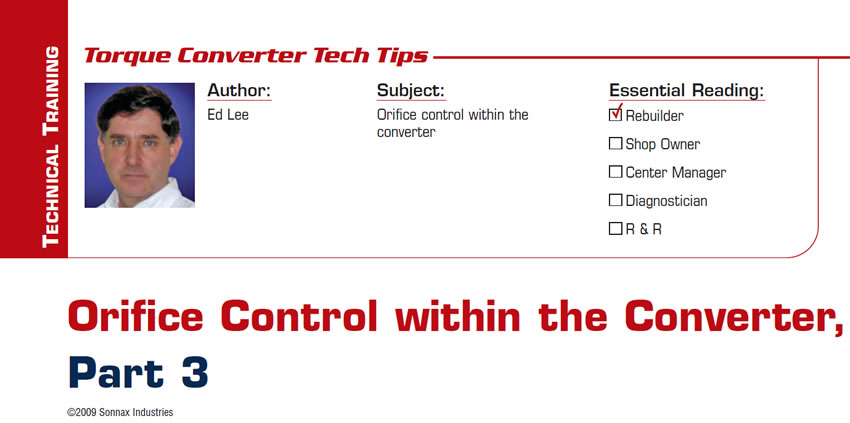
Point de Non-Retour (Point of No Return)
2004 and later AX4N/4F50N units have a new design for the gasket between the case and case cover. Changes in the area of the neutral/reverse accumulator (Figure 1) required a small change in the opening for the accumulator. The 1.490-inch-diameter opening used on 2000-2003 units was increased to 1.810 inches in 2004.
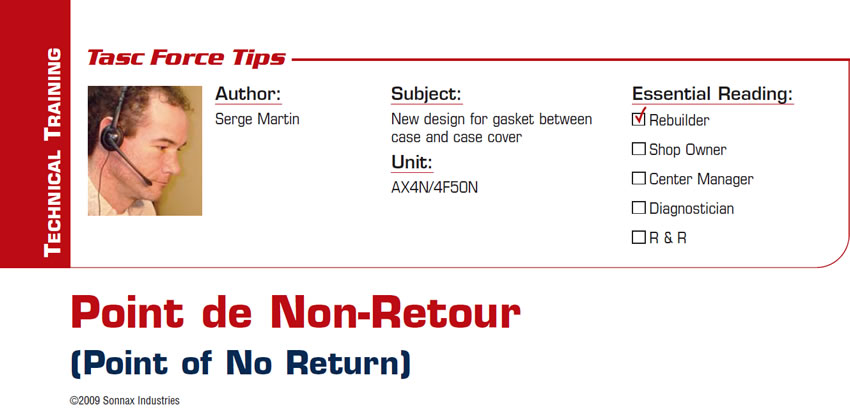
Cynically Clever
One recent example involved a Toyota Camry with the A140-E four-speed transaxle and an L4 engine. Although this transmission was used in model years 1983 through 2001, we rarely receive calls on it – yet in one week I had three calls. One problem was rapid or stacked upshifts with no kick-down shifts. This problem is typically caused by restricted solenoids. The second call was a harsh engagement into reverse. This is typically caused by the use of flat frictions to replace the waved ones originally installed (see Shift Pointers on page XX of this issue).
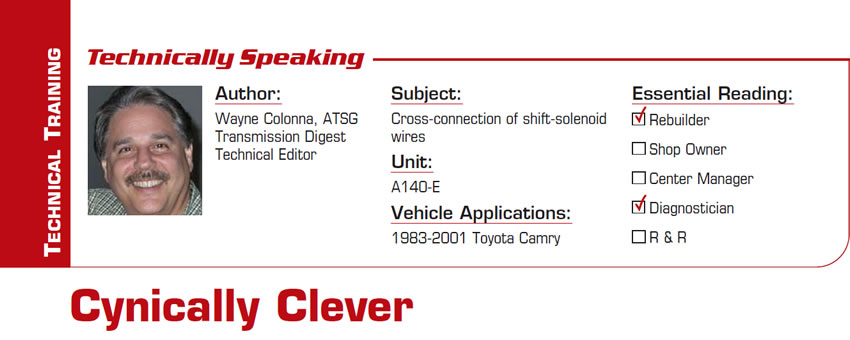
The Wave of the Future
Ever rebuilt a Toyota transmission that then shifted hard into drive and reverse and on light-throttle upshifts, and everything you tried – adjusting the linkage, messing with line pressure – didn’t fix it?
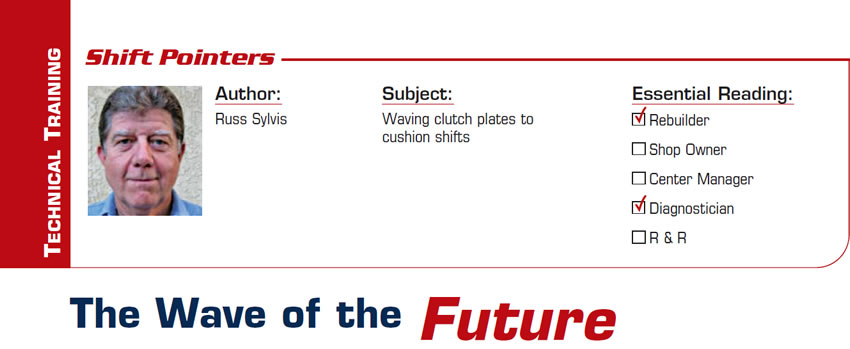
Broccoli: Corroded wiring causes TPS-voltage code
We had a 1999 Dodge 24-valve diesel truck that came into our shop with no fourth and no lockup. The truck had been at another shop, which had already replaced the accelerator-pedal-position sensor (APPS) and the powertrain control module (PCM) in an attempt to fix this complaint.
